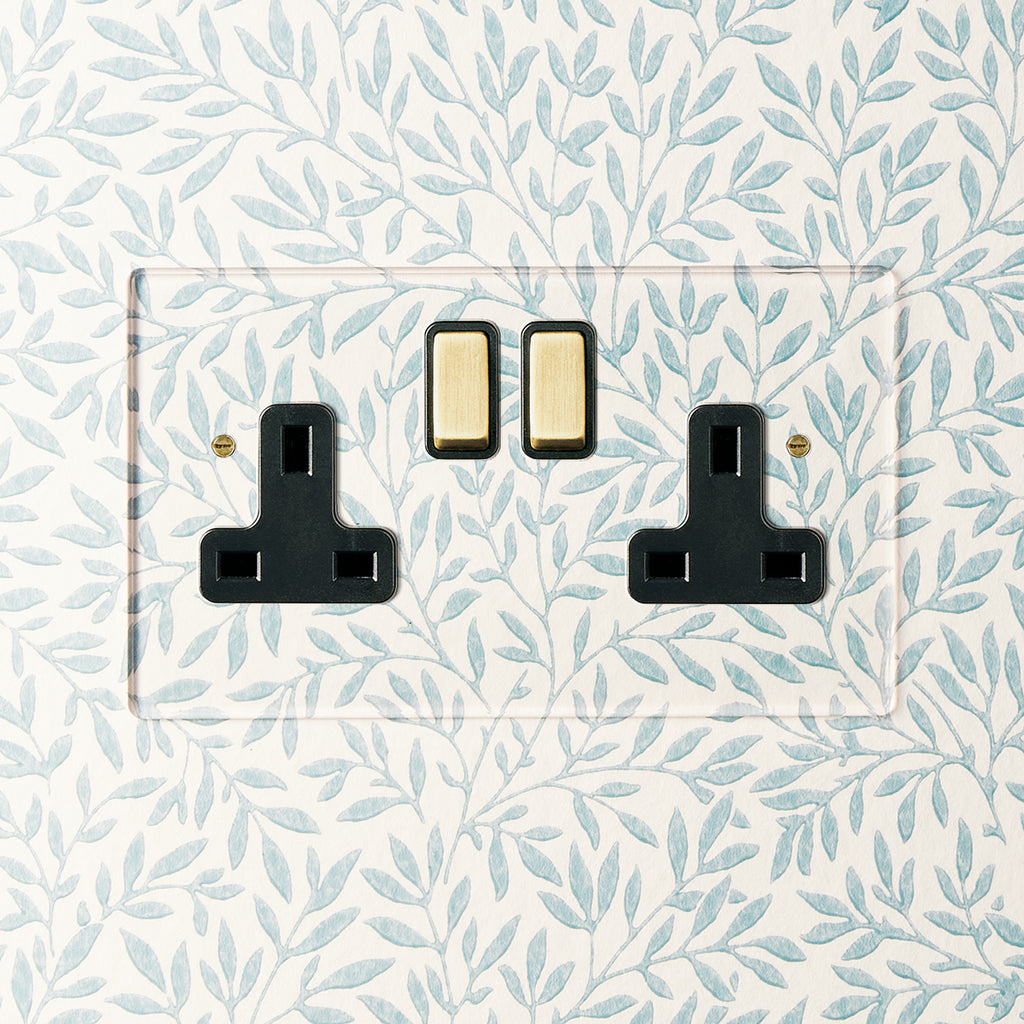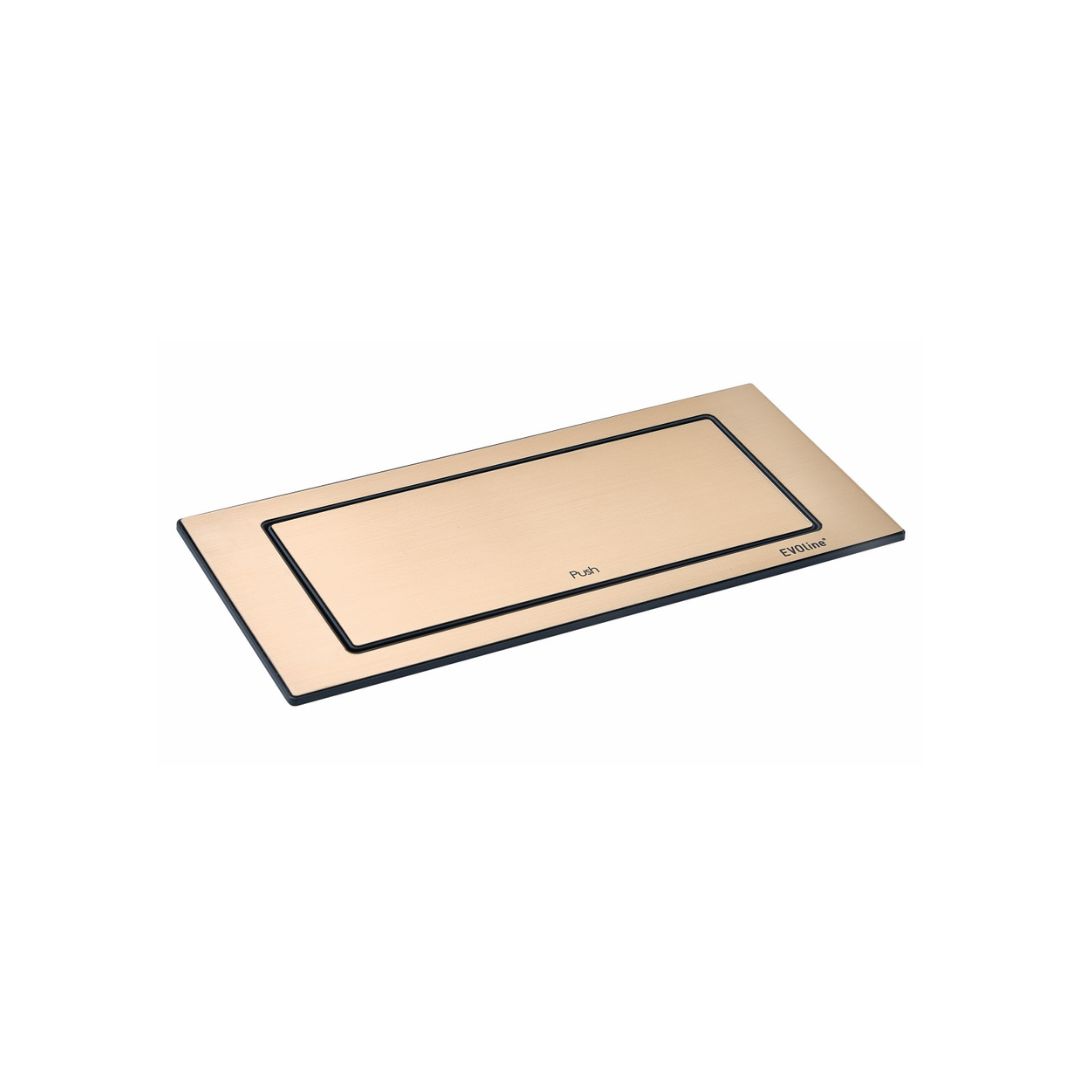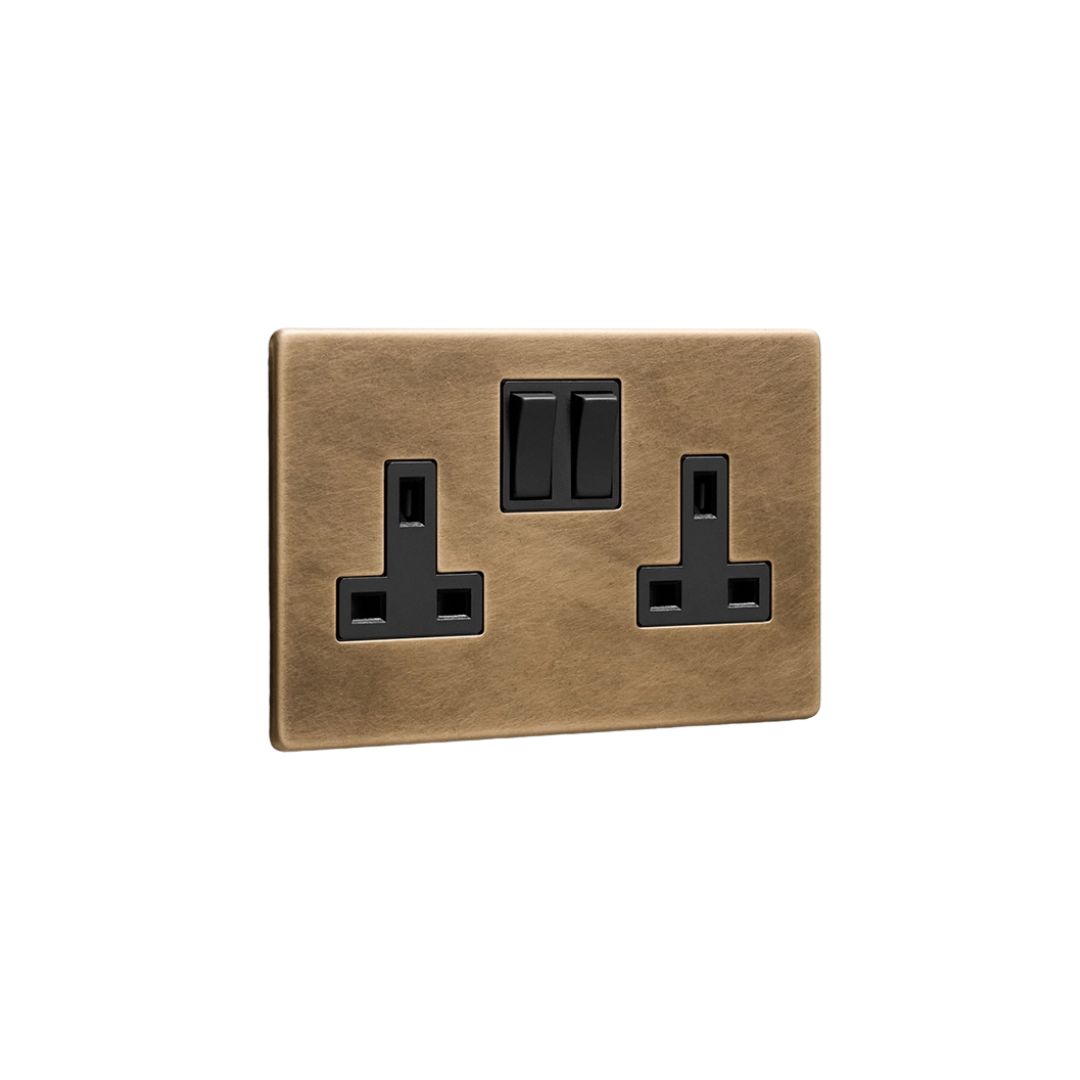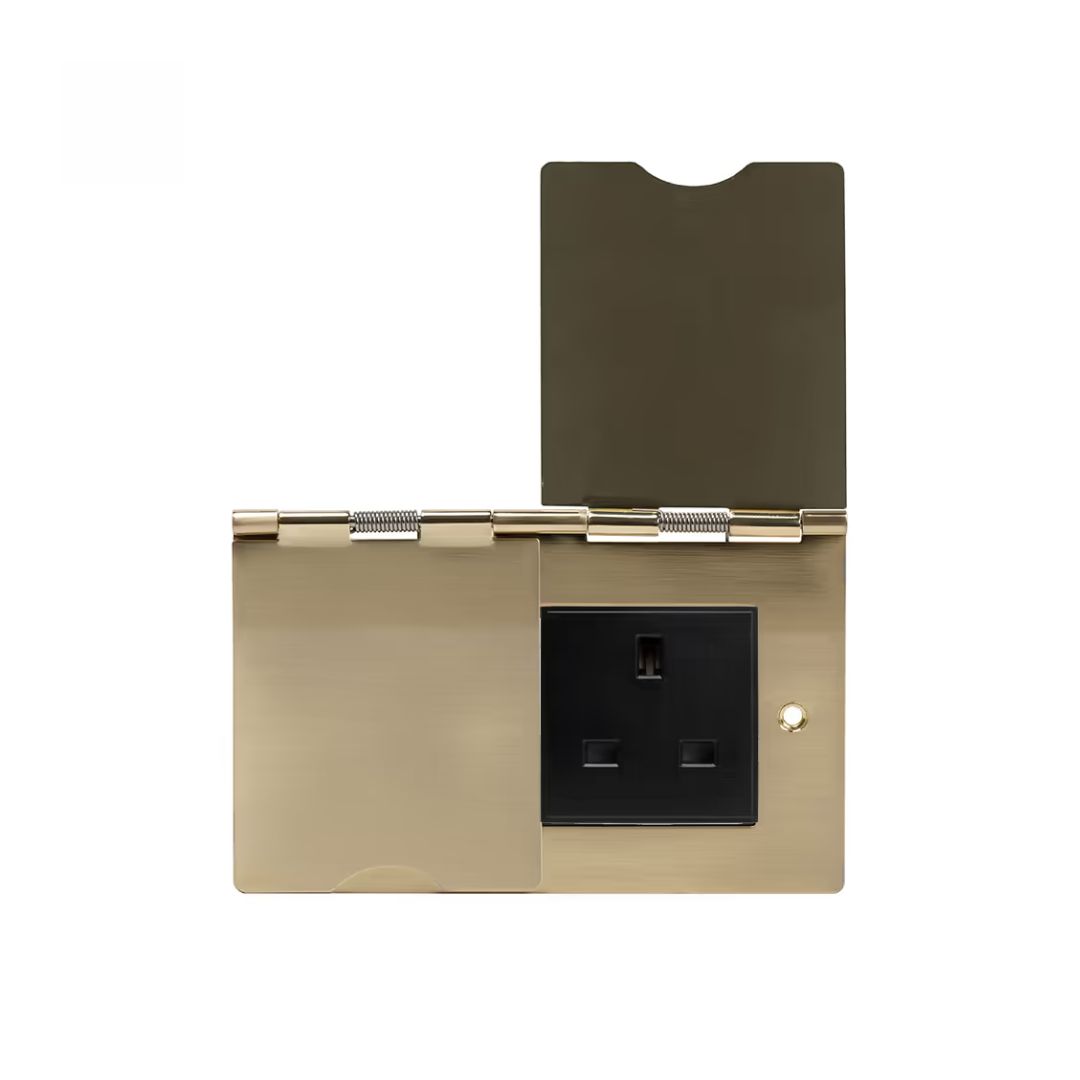10 Hidden Kitchen Socket Ideas That Disguise Eyesores and Make Backsplashes Look More Minimalist
Discover innovative ways to hide those ugly outlets and claim a sleek, clutter-free space
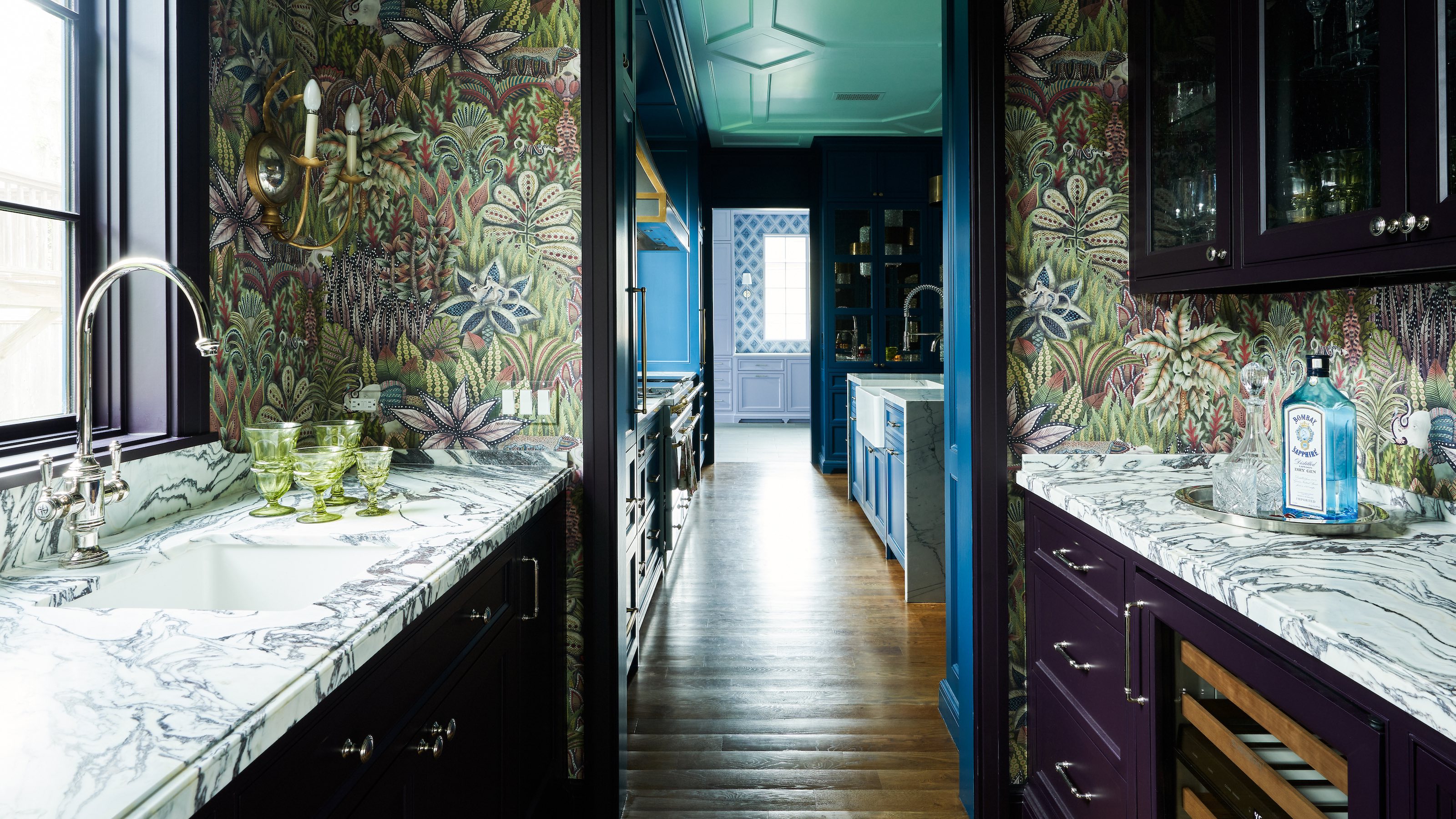
Yes, power sockets are essential in a kitchen, but must they mar your backsplash and blemish your island front? Certainly not. In today’s design-centric world, our kitchens are crafted with clean lines, beautiful finishes, and an emphasis on refined aesthetics. Exposed sockets disrupt that vision, cluttering your elegant surfaces and drawing unwanted attention. It’s time to embrace the art of concealment – integrating power outlets that blend seamlessly into your modern kitchen ideas while remaining conveniently within reach.
Rethinking the traditional, cluttered approach to kitchen design, clever designers are opting for hidden or disguised sockets. These modern solutions ensure that power sources do not dominate your visual landscape but instead harmonize with your cabinetry and countertops. Whether tucked out of sight, hidden inside a drawer, or subtly integrated into a pop-up solution, these concealed options empower you to maintain an uncluttered, sophisticated look without sacrificing functionality.
Fortunately, there are a multitude of clever ways to hide or disguise your kitchen sockets, and our top 10 options showcase the best of these inventive solutions. Each method is designed to enhance visual appeal while keeping it practical, efficient, and accessible.
1. In-Drawer Power Stations
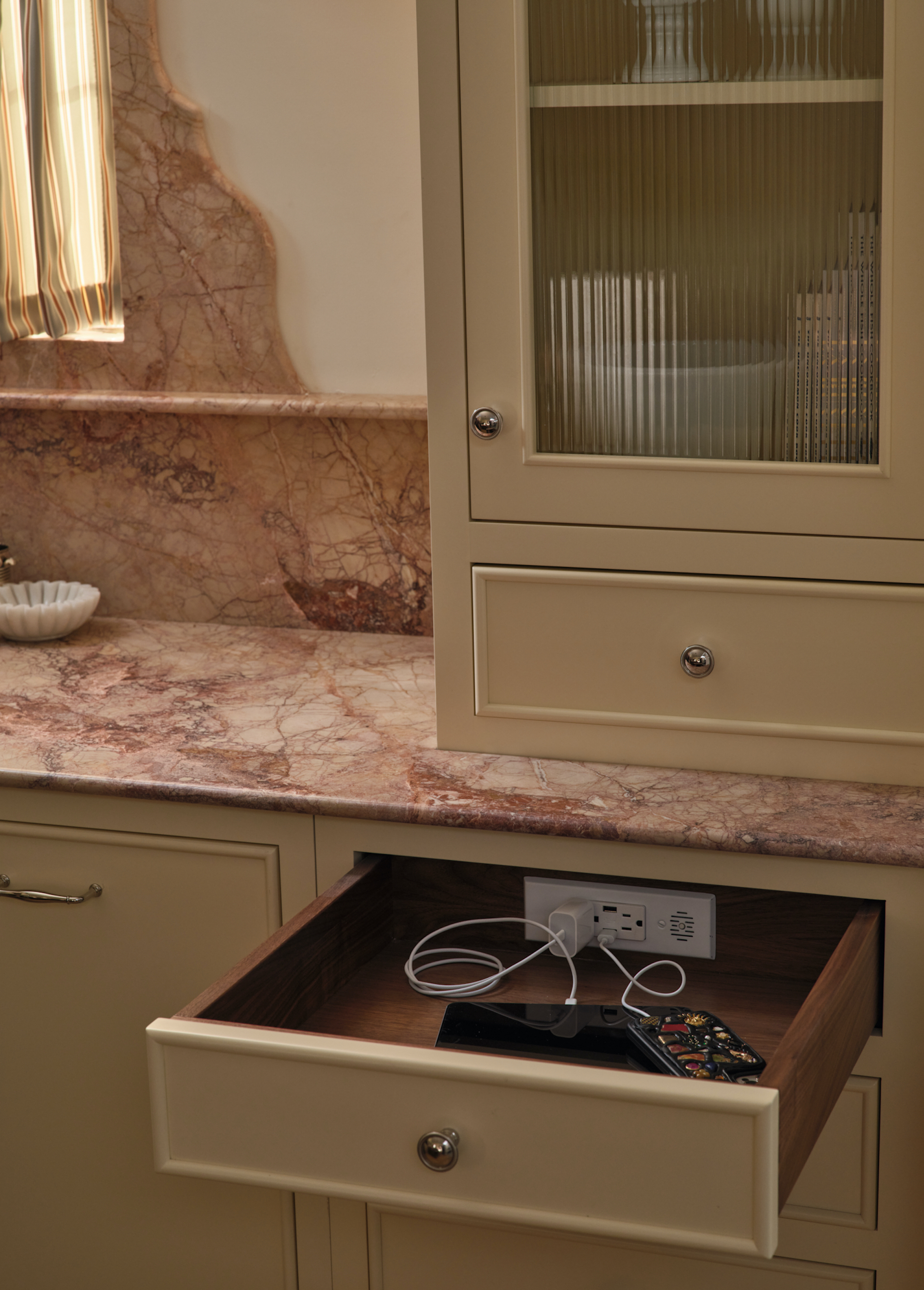
Chuck trailing cables and the devices they're attached to in a charging drawer.
With so many gadgets to charge – and an ever-growing arsenal of battery-powered kitchen appliance trends – in-drawer power stations are becoming a must-have. These discreet hubs, tucked neatly inside drawers beneath the counter, help you hide those cords in your kitchen and store devices safely away from splashes while you're cooking up a storm.
"Hidden outlets are a clever way to conceal tech clutter, assuming you are able to work in an extra drawer in your design," says Emily Arthur, co-founder, Isla Porter. Try to allocate charging to a drawer that’s away from the main cooking hub. "Before you decide on installing a drawer with a hidden outlet, think first about what devices you want to use it for. You'll want to make sure those devices fit comfortably in the drawer, and you have the right number of power points. They’re also great if you're the type of person who likes to lock their phone away for the evening."
From a technical point, Emily explains that charging drawers will need to be planned it at the same time as the rest of your kitchen electrics. "Your electrician will need to install an outlet behind the drawer. The outlet that's integrated into your drawer will then connect with the wall outlet, acting almost like an extension cord," she explains.
2. Transparent Sockets
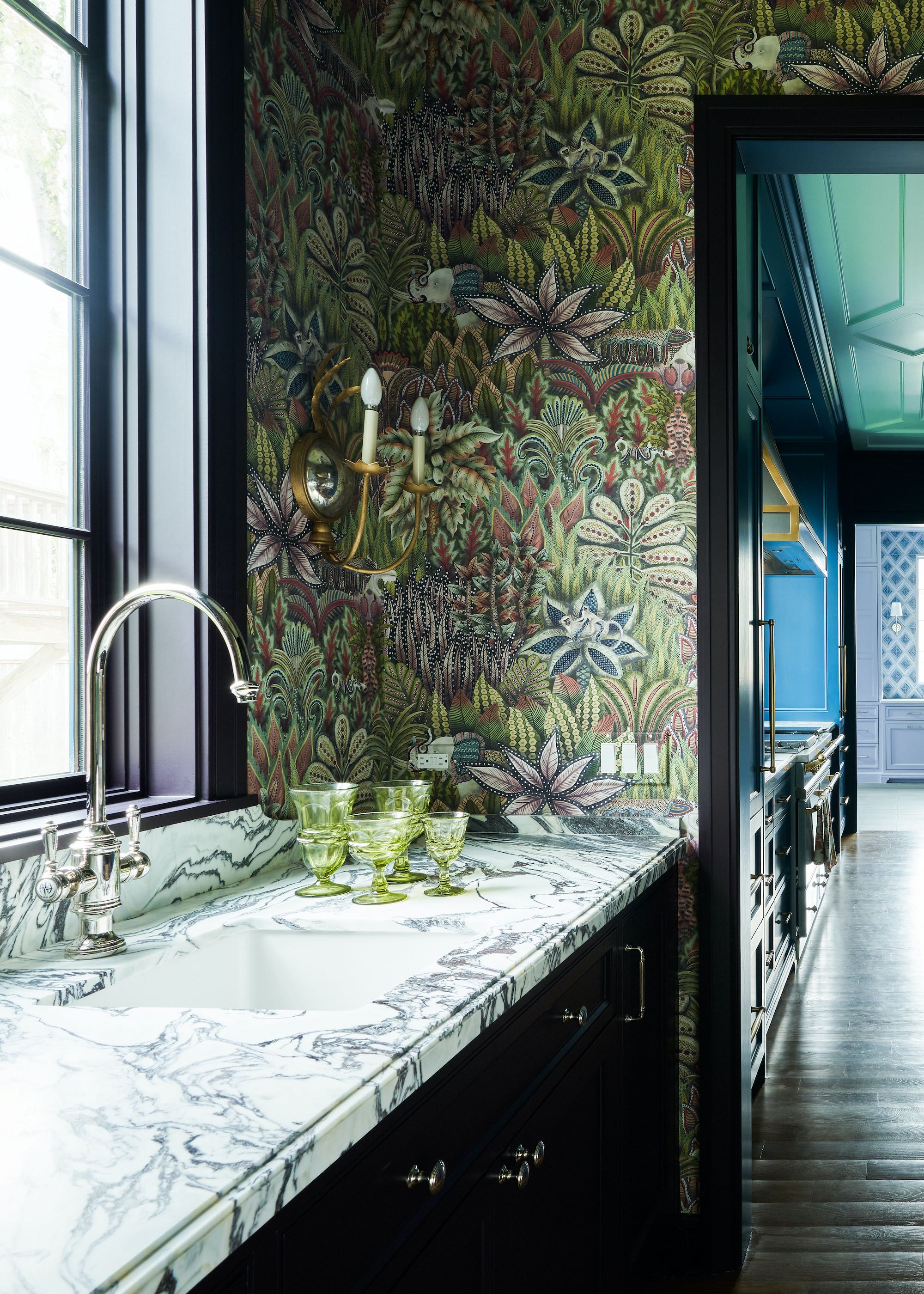
You'll have to squint to spot these transparent sockets!
Gone are the days of kitchen walls poached with chunky (and frankly, ugly) power points. Transparent sockets are the sleek solution we didn’t know we needed. With a crystal-clear faceplate – usually crafted from durable acrylic – they allow your kitchen wallpaper or painted finish to show through, making the socket virtually disappear. It's a small detail that makes a big difference, especially in design-led kitchens where every element matters.
"These specialty sockets – we like to use Forbes & Lomax’s invisible range – are a great option when you are seeking to create a barely-there look," says architect Nadia Palacios. Transparent sockets come with a paper underplate (that sits behind the clear faceplate), which is designed to be either painted or used as a template for wallpaper. "In this project, we covered the underplate in a precisely aligned piece of wallpaper for a cohesive, seamless appearance – we love how these sockets don’t disrupt the beautiful pattern," explains Nadia.

Nadia Palacios Lauterbach, a registered architect in Texas and Colorado, founded Nadia Palacios Residential Design in 2009. A University of Notre Dame graduate, she draws inspiration from her travels through Europe and Latin America, creating timeless, liveable, and beautifully crafted spaces
3. Pop-Up Sockets
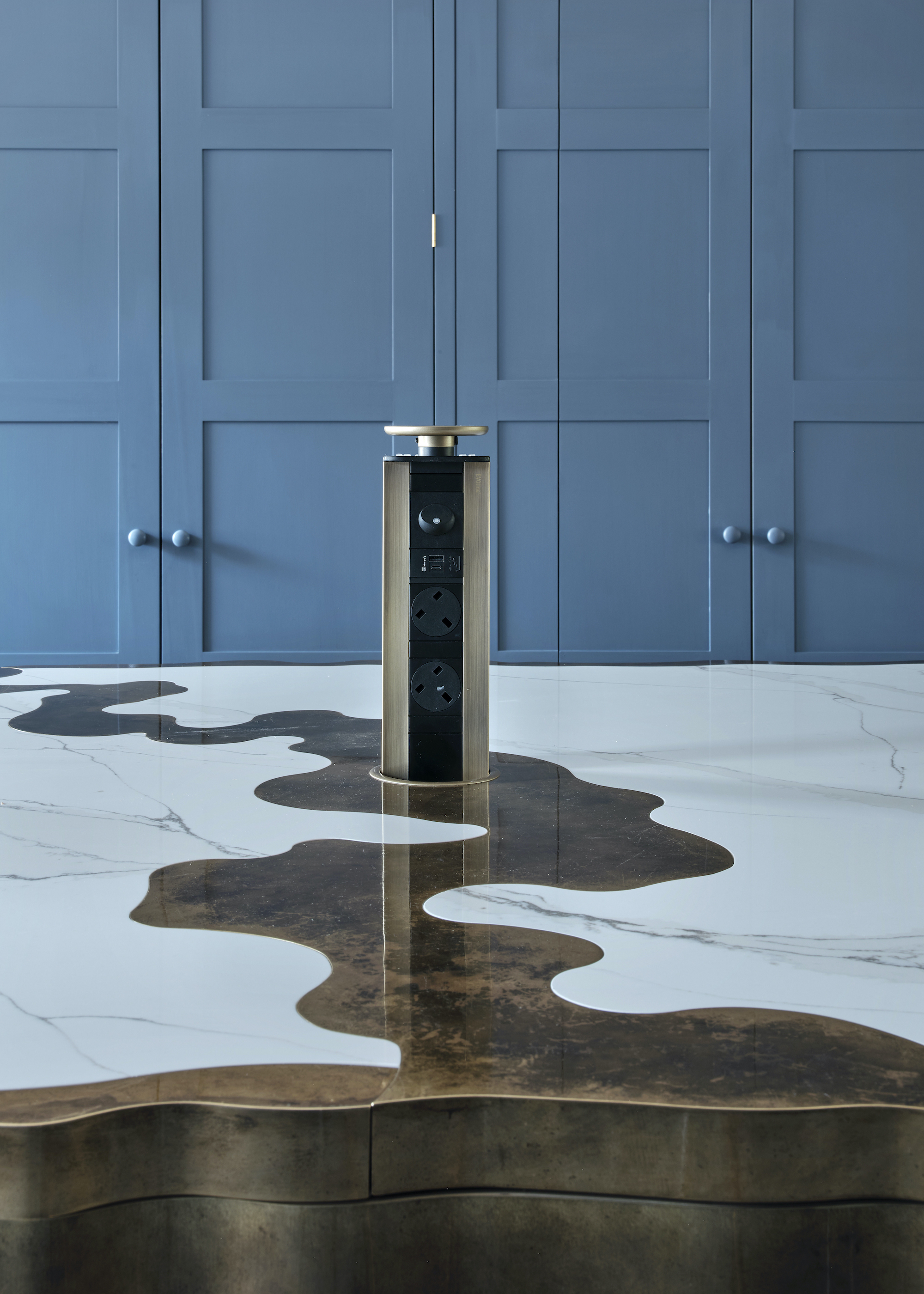
Pop up sockets are the smart way to power up an island.
Pop-up sockets are a neat way to hide power outlets. Installed flush within the worktop, these sockets can be pushed down to disappear when not in use, maintaining a clean surface. They’re not ideal for appliances that need to be plugged in all the time – this is the place to power up your food mixer, hand-blender or any appliance that you’ll pack away after use.
Many modern designs include USB and C+C ports, making it easy to charge devices as well as plug in appliances. Their tower-like design can be a bit wobbly, so it’s important to go for a quality fitting with smooth operation – invest in the best you can afford; this is not the place for cheap copies.
Interior designer Cindy Leveson is a firm fan. "I chose this concealed pop-up socket because it is essential to have power on an island," she explains. "This one has an unlacquered brass top, which was just what I was wanted to ensure it’s almost invisible when depressed – it fits perfectly into the brass river that runs through the marble worktops."
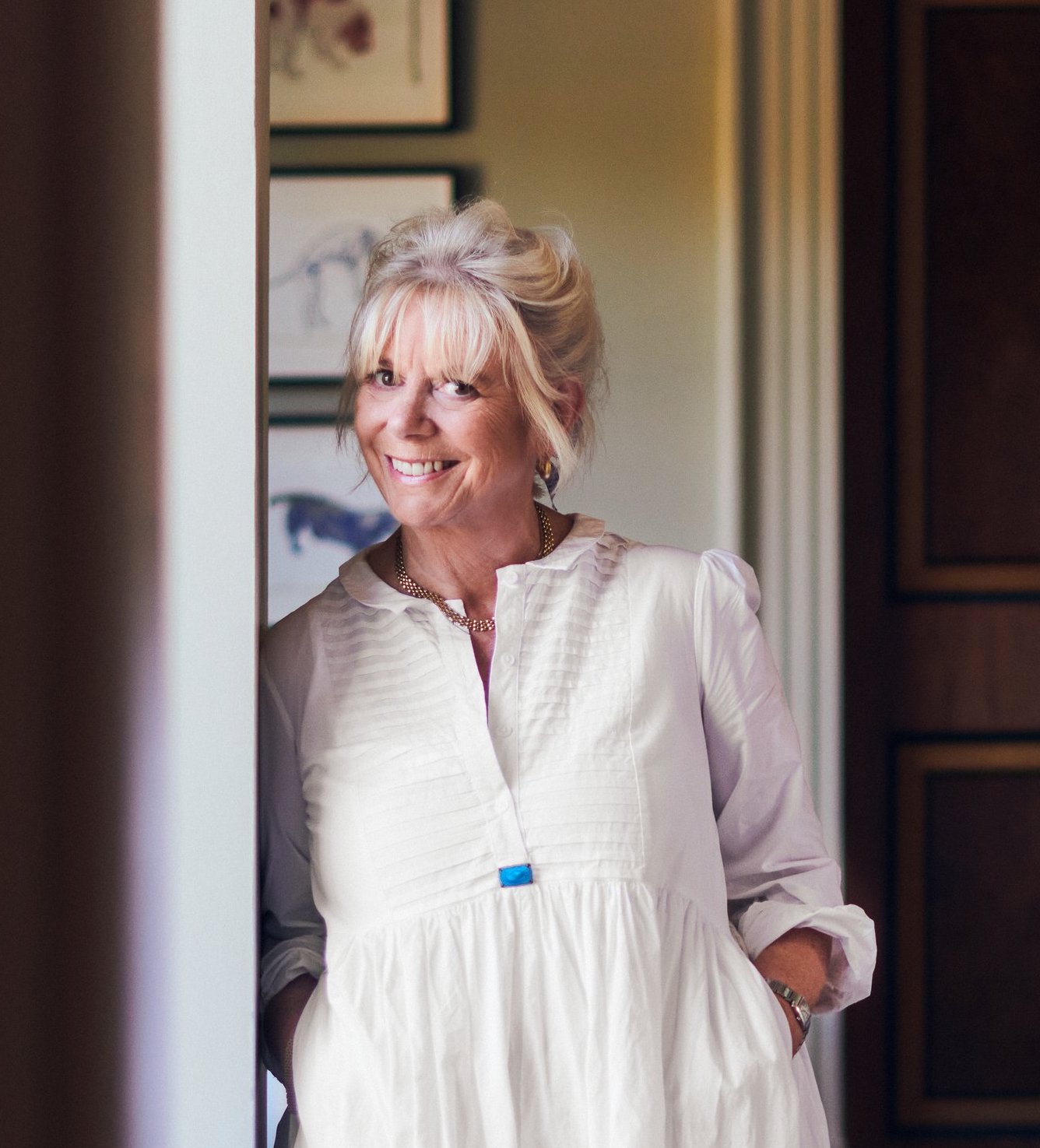
Leveson Design was founded in 1990 by Cindy Leveson, whose portfolio spans elegant private residences in both London and the countryside, as well as standout commercial projects—her first being the iconic Kennels at Goodwood. With a refined, understated aesthetic, Cindy’s guiding principle is simple: there’s nothing more uncomfortable than being over-decorated.
4. Color Coordinated Sockets
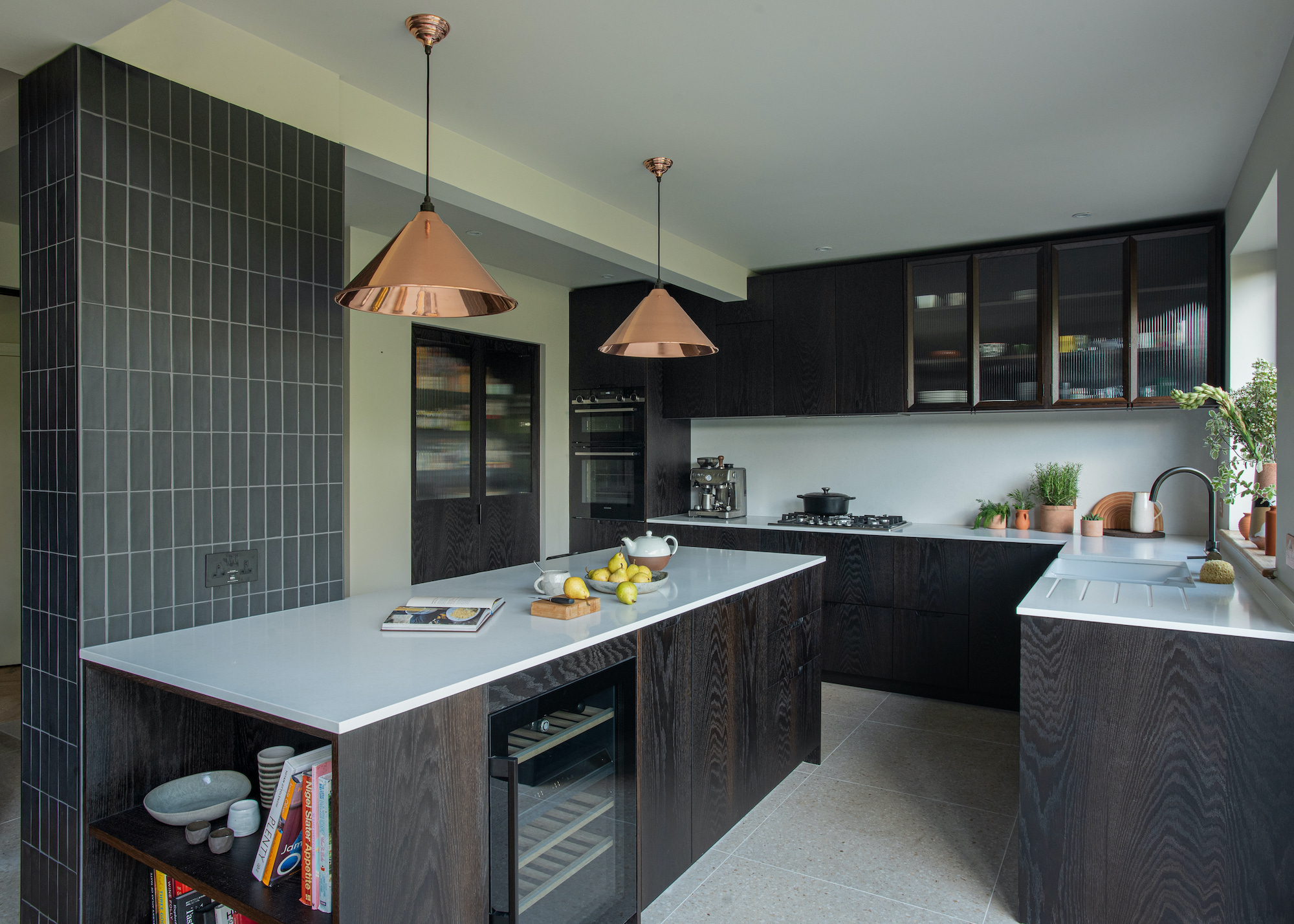
A black socket on a black background blends with chameleon skills.
"Sockets are functional and not that beautiful to look at," says interior designer Ruth Milne with refreshing honesty. Her ploy for playing them down is to color-match the sockets to their surroundings and, as this project shows, it works a treat. "I try to hide sockets whenever I can in my projects – for this one, the black wall tiles are a big feature and a light-colored socket would have really stood out. But not in a good way," she says.
Not only did she manage to source a black socket, but she also found one in a matt finish to ensure even its sheen levels were an accurate match. Using this co-ordinating technique means you can place sockets exactly where you need them, and they’ll be discreet yet highly functional. Clever.

Qualified interior architect Ruth Milne is the founder of Studio Milne, a London-based interior design consultancy specialising in residential and boutique commercial projects in London and beyond. Studio Milne offers comprehensive, well-considered, bespoke design solutions that consistently deliver spaces exceeding all expectations.
5. Paintable Sockets
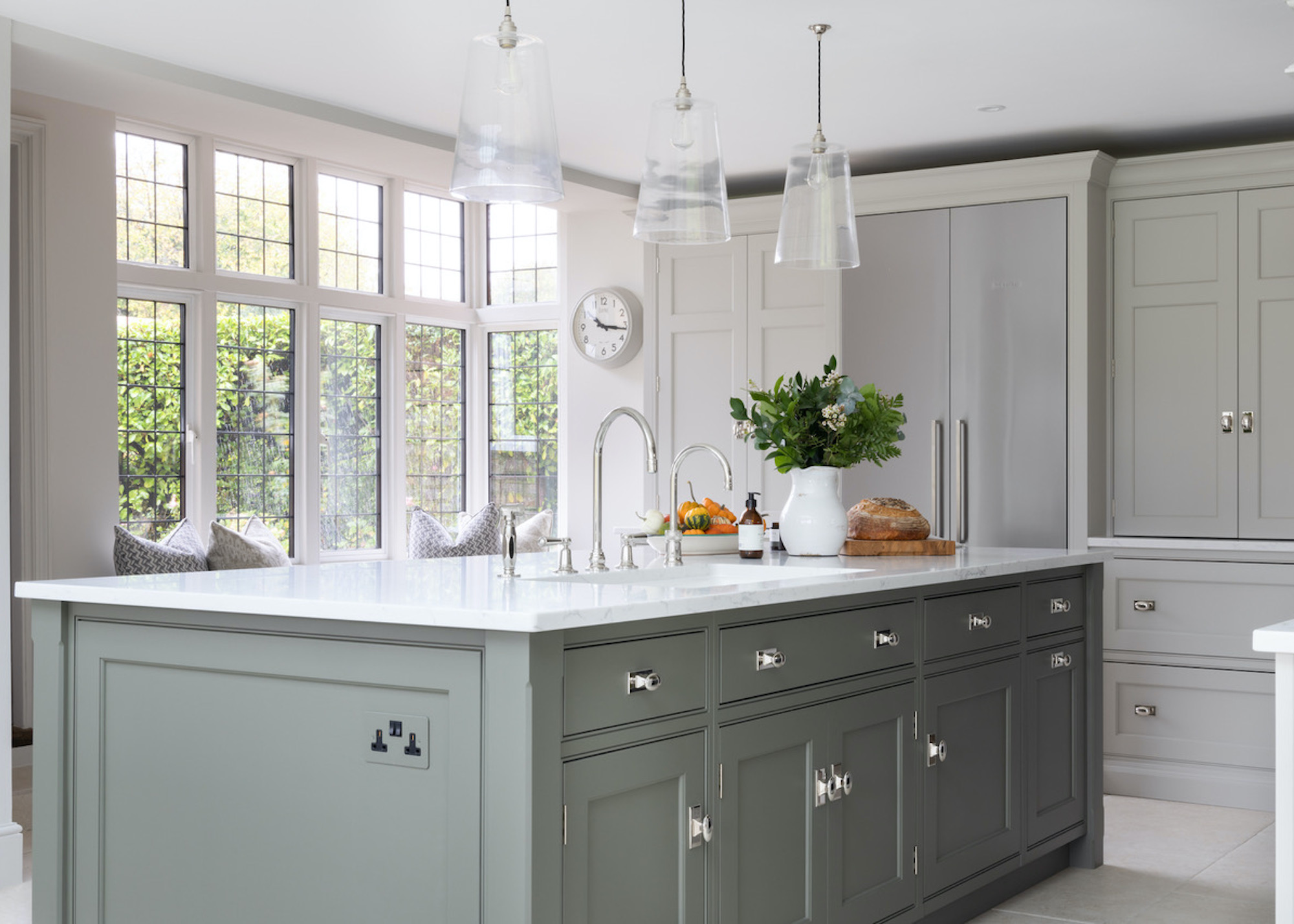
Painted in the same color as the cabinetry, this socket is super discreet.
For the chameleon-grade socket skills, seek out paintable versions that can be finished in the same color as your kitchen cabinetry, as it's a great way to hide electrical sockets. These sockets will completely disappear, maintaining the seamless look of your space without drawing attention to the functional elements of your design.
"Paintable sockets are a game-changer – especially for kitchen islands or any cabinetry that’s within a prime sight-line, where power is essential, but visibility should be minimal," enthuses Louisa Eggleston, creative director, Humphrey Munson. "We only use Forbes & Lomax – they are discreet, very well made and the painted finish is applied in our workshop so that the sockets blend effortlessly in the room. It’s a small detail that makes a big difference, as you just wouldn’t get the same effect with a metal finish socket in the same scenario."
If you’re considering paintable sockets and are not sending them to your cabinetmaker for a factory finish, success really does rely on neat brushmanship. A shoddy paint job will be glaringly obvious. Try to use the same paint tin, as different batch numbers can lead to slight but obvious color differences.

Louisa Eggleston is the Creative Director at Humphrey Munson, where she has worked for more than a decade. Holding a law degree from Durham, she began her career as a solicitor before transitioning into the creative field. Now, she leverages her impressive skills in visual communications to lead the creative team, blending modern aesthetics with the brand’s enduring heritage in every project.
6. Flip-Top Worktop Sockets

The top swivels around to reveal a handy line-up of sockets. I mean, pretty cool right?!
If you prefer a more industrial look, flip-top (aka backflip) kitchen worktop sockets are a stylish way to keep your electrical points hidden when not in use. As the name suggests, the lid can be flipped open with ease to reveal the socket underneath, making them perfect for creating a sleek, modern aesthetic. Some people find their horizontal power point alignment easier to manage than vertical pop-up solutions.
"The best thing about backflip sockets is that they offer hidden functionality, elevating the practicality of a space without compromising on style," says Stuart Dance, director, InHouse Inspired Room Design. "Their sleek design and flush-fit benchtop integration ensure surfaces remain uncluttered. The closed, flat design protects the outlet from spills, dust, and everyday wear. Backflip sockets are easy to use, smoothly rotating to open with a light press, eliminating the risk of jamming or mechanical failure."
For flawless installation, Stuart recommends opting for models with durable hinges and a refined soft-close motion. "Placement is key – position them in convenient, easy to access areas, ensuring there’s enough space for the number of appliances you’ll be using," he adds.
7. Tuck Sockets Under the Breakfast Bar
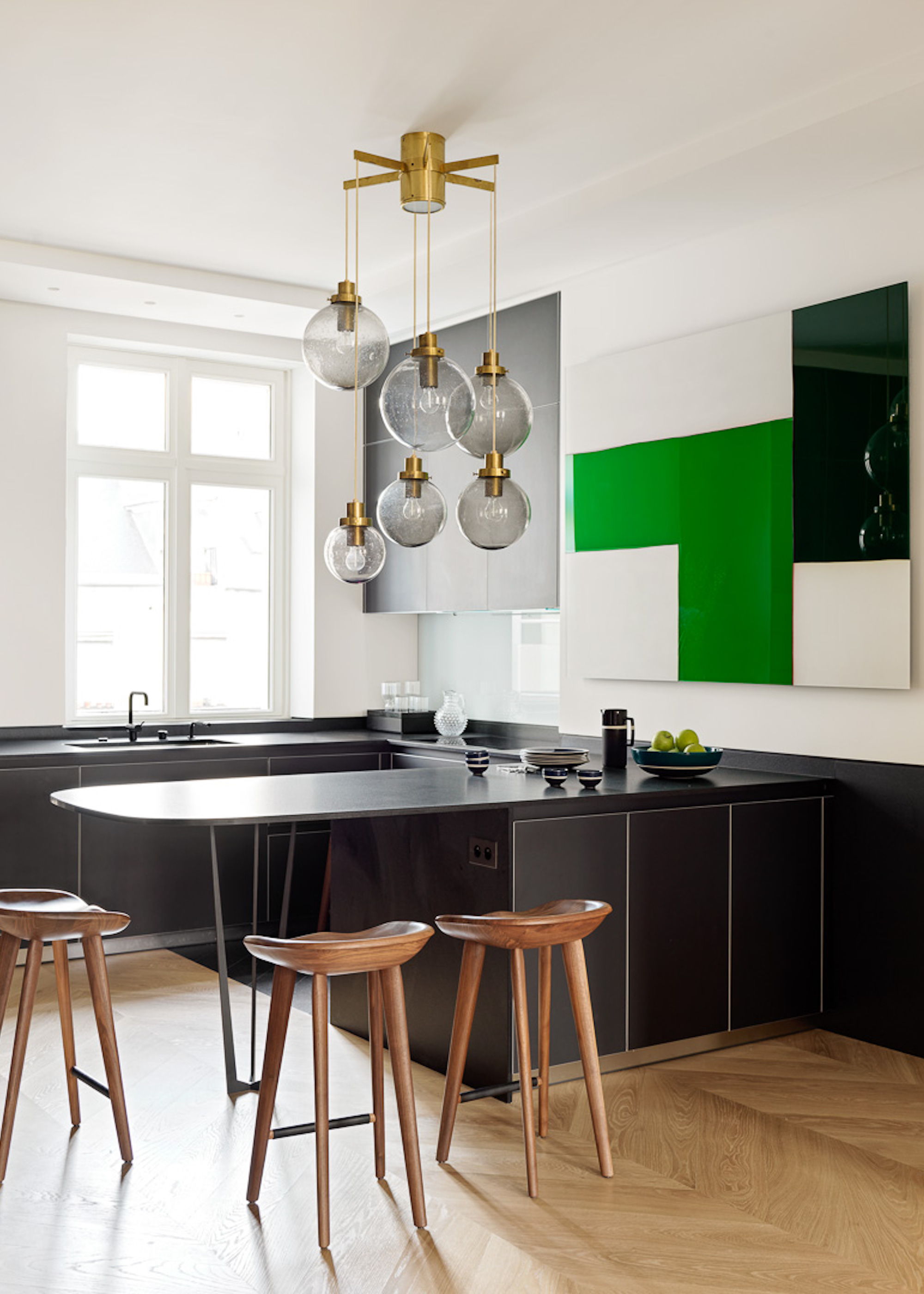
Color coordinated and tucked under the breakfast bar – this socket is hiding in plain sight!
For an ultra-sleek look, consider hiding your sockets under the kitchen breakfast bar. Tucked away at the back, they remain accessible but virtually invisible—especially if you choose a color-coordinated design.
You can leave the peripheral on the bar stool while it charges. It’s a great way to hide the chaos of charging cords while keeping the top of your bar clear and clean. This discreet placement allows guests to charge devices where they sit, without hogging a precious power point in the heart of your kitchen. Plus, it’s ideal for powering a laptop when the space is used as a work-from-home spot or impromptu office.
The downsides? If the bar has a deep overhang or is set at an awkward angle, it can sometimes be a little tricky to reach the sockets, especially for less able users or younger children. It’s also not an ideal place to plug in small appliances that you want to use on the working side of the island unless they have very long cables.
8. Choose Stylish Sockets
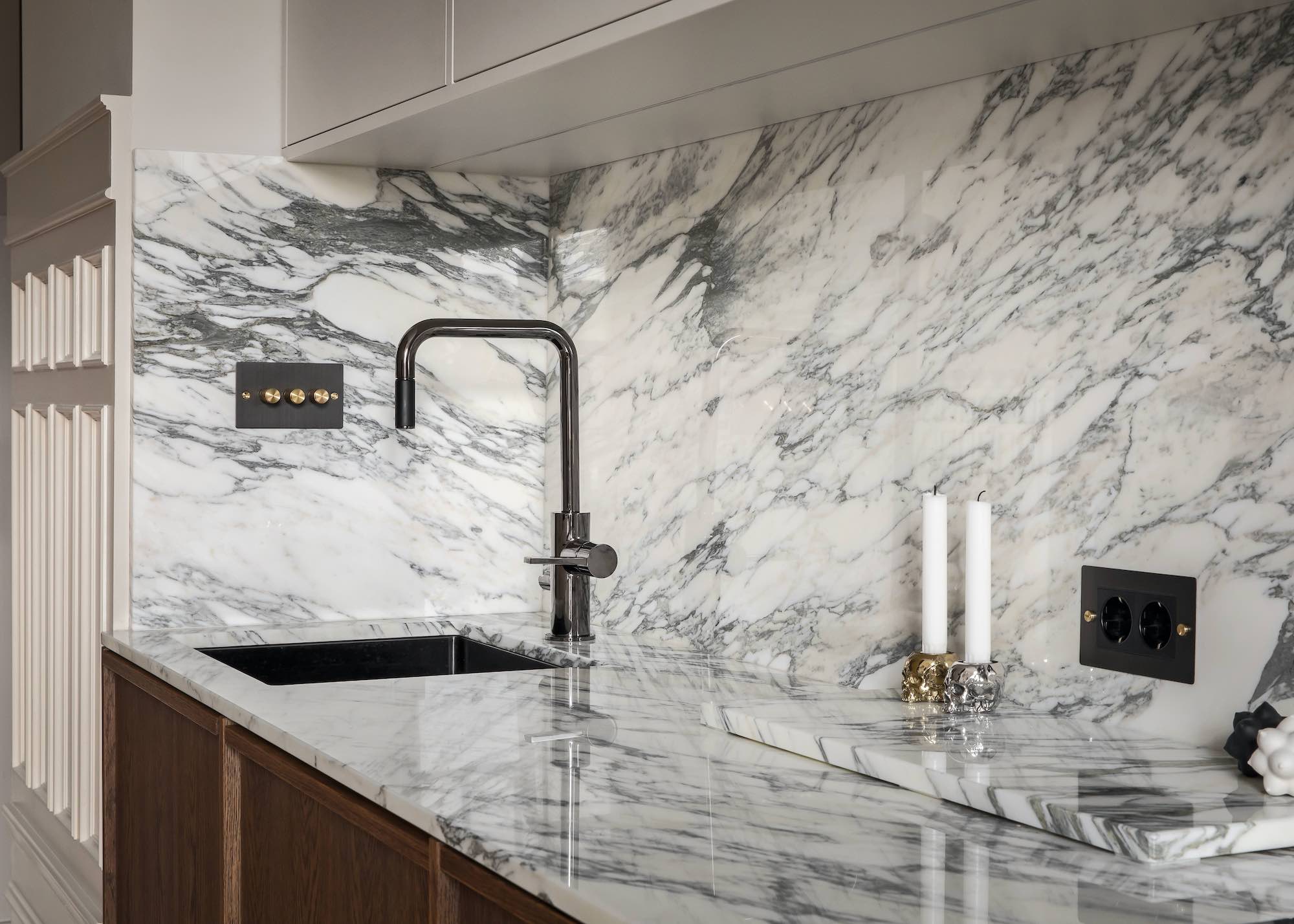
If they're gorgeous and matchy-matchy - display your sockets with pride!
If hiding sockets away seems like too much of a hassle, why not make a statement and opt for designer sockets that harmonize with your kitchen’s hardware? Whether you prefer polished metal finishes, matt textures, or bold pops of colour, these statement pieces can enhance your space while remaining fully functional.
For obvious reasons, Massimo Buster Minale, creative director of Buster + Punch, is a firm advocate of this route, and he does make a compelling case. "The kitchen as a space should be driven by function, and elements like outlets need to be both accessible and thoughtfully designed since they’re interacted with frequently," he says.
Brands like Buster + Punch work hard to ensure their solid metal interior details – sockets, outlets, light switches, and dimmers – boost both aesthetics and ergonomic functionality throughout the kitchen. "When you decide to build your design around such details, everything feels more elevated," explains Massimo. In short, when sockets look seriously good, there’s really no reason to hide them at all.
9. Tuck Them Into the Corners
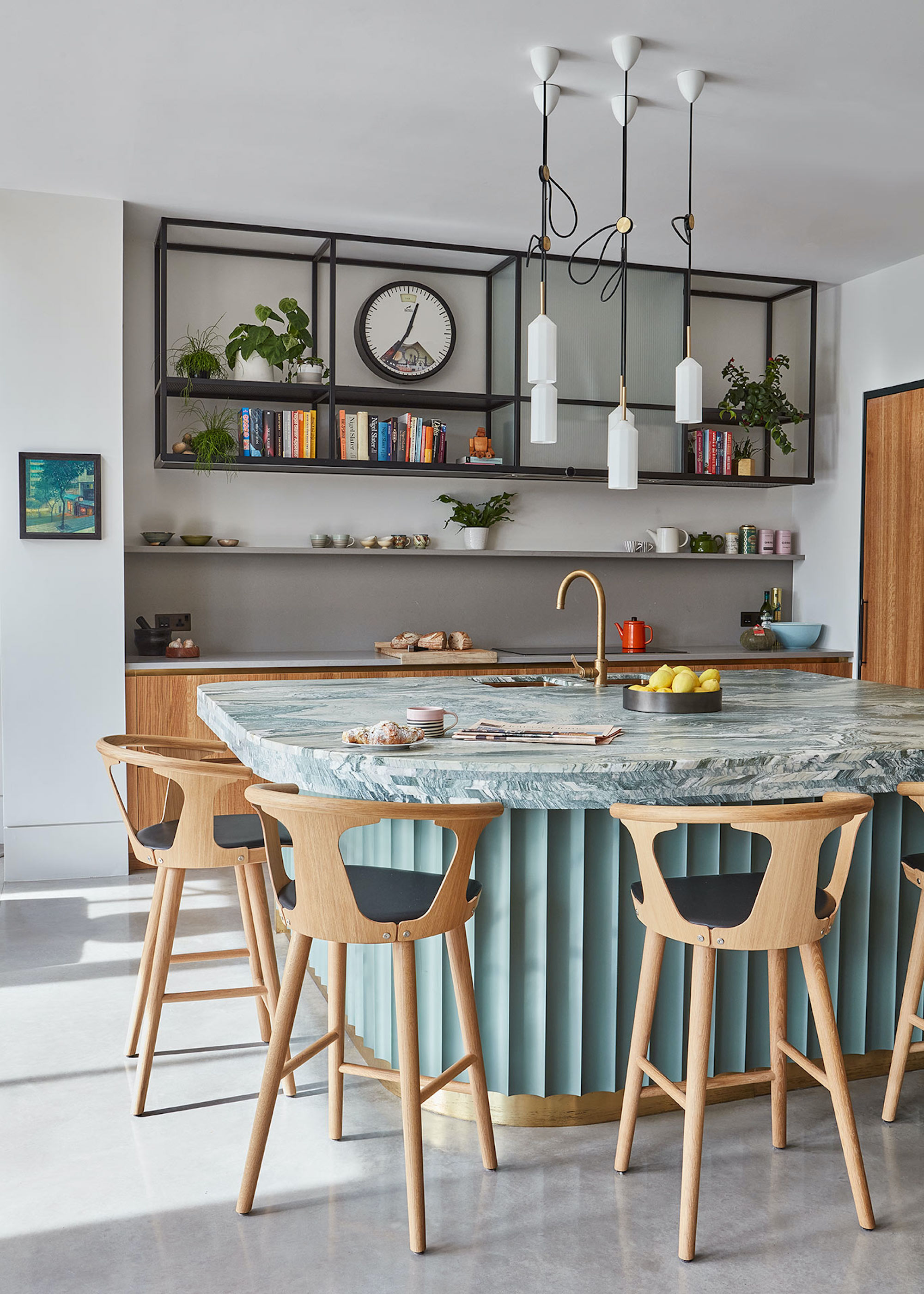
Arrange your prettiest kitchen accessories in front of sockets.
One of the simplest ways to hide kitchen sockets is to cleverly disguise them behind artfully arranged chopping boards, artwork, and plants. "Not only will this draw the eye away from the sockets, but it also adds interest and personality to your home," explains Jeremy Bott, managing director at Blakes London.
When planning your kitchen to conceal sockets this way, it might be tempting to nestle them tightly into a worktop corner. However, Jeremy recommends placing them at least 20cm away from the worksurface and walls. "While the general consensus is 15cm, we always aim for 20cm so that cables aren’t bent or squashed between the plug and the worktop," he advises, noting that UK Building Regulations also require sockets to be at least 30cm from sinks, ovens, and hobs.
Let houseplants become a design ally in this strategy. They not only serve as a natural disguise for the sockets, but they also soften and enhance the overall look of your kitchen. This socket-hiding move is best saved for sockets that you don't use too frequently, is perfect for the yoghurt maker, and is less ideal for the toaster.
10. Inside Breakfast Cupboards

Embrace the power to shut everything away.
Hiding power sockets inside breakfast cabinets or a pocket door breakfast station is a smart way to secure a streamlined, clutter-free kitchen without compromising functionality. By concealing sockets behind cupboard doors or within a designated appliance garage, you keep worktops free from trailing cables and unsightly plugs. It’s particularly effective in breakfast zones where toasters, coffee machines, and juicers are used daily but really don’t need to be permanently on display. With sockets hidden inside the cabinet, these appliances can remain plugged in and ready for action without disrupting the overall aesthetic of the space once those doors are shut.
While the advantages are clear, there are a couple of trade-offs to consider. Heat build-up can be an issue if several appliances are used simultaneously in an enclosed space, so planning good ventilation is essential. There’s also the question of access—if you’re always in a mad rush in the mornings, the extra effort of opening doors to get coffee on the go may prove a total buzzkill. Still, if you value a seamless look above all, hiding sockets inside breakfast cabinets is the way forward.
FAQs
Where Should Sockets Be Placed in a Kitchen?
When it comes to planning a kitchen, positioning power sockets is one of the most important decisions you’ll make. Start by considering how you’ll use the space on the regs. Countertops where you plan to prep food, make tea or coffee, or plug in small appliances like toasters and blenders should have conveniently located sockets just above the counter. Ideally, they should be spaced as close to where you’ll need them as possible, so you’re never stretching cords or juggling appliances near the sink or hob – both off limits for safety reasons.
To work out how many sockets you’ll need, first tally up the appliances you'll need to keep plugged in permanently, and then add at least one extra spot for future gadgets. How many people are now juggling to power their airfryer because it wasn’t on their radar when their kitchen was installed? Next, designate at least two spare sockets for those occasional-use devices. The goal is to have enough, but without panicking and pocking every available surface with a socket.
Don’t forget about less obvious zones, too. Inside breakfast cupboards or appliance garages is a great place to tuck sockets away for items that stay plugged in but don’t need to be seen. Under breakfast bars, inside drawers, or even built into the side of an island can also be smart spots – perfect for charging phones, powering laptops, or creating a WFH space. Ultimately, well-placed sockets make your kitchen work harder and look better.
Whether you like your sockets hidden in plain sight, cleverly disguised, or dressed to impress, there’s an option to suit. It’s all about keeping your space sleek, stylish and effortlessly functional – frankly, there’s really no excuse for eyesore sockets.
Be The First To Know
The Livingetc newsletters are your inside source for what’s shaping interiors now - and what’s next. Discover trend forecasts, smart style ideas, and curated shopping inspiration that brings design to life. Subscribe today and stay ahead of the curve.
Linda is a freelance journalist who has specialized in homes and interiors for more than two decades, and now writes full-time for titles like Homes & Gardens, Livingetc, Ideal Home, and Homebuilding & Renovating. She lives in Devon with her cabinetmaker husband, two daughters, and far too many pets, and is currently honing her DIY and decorating skills on their fourth (and hopefully final) major home renovation.
-
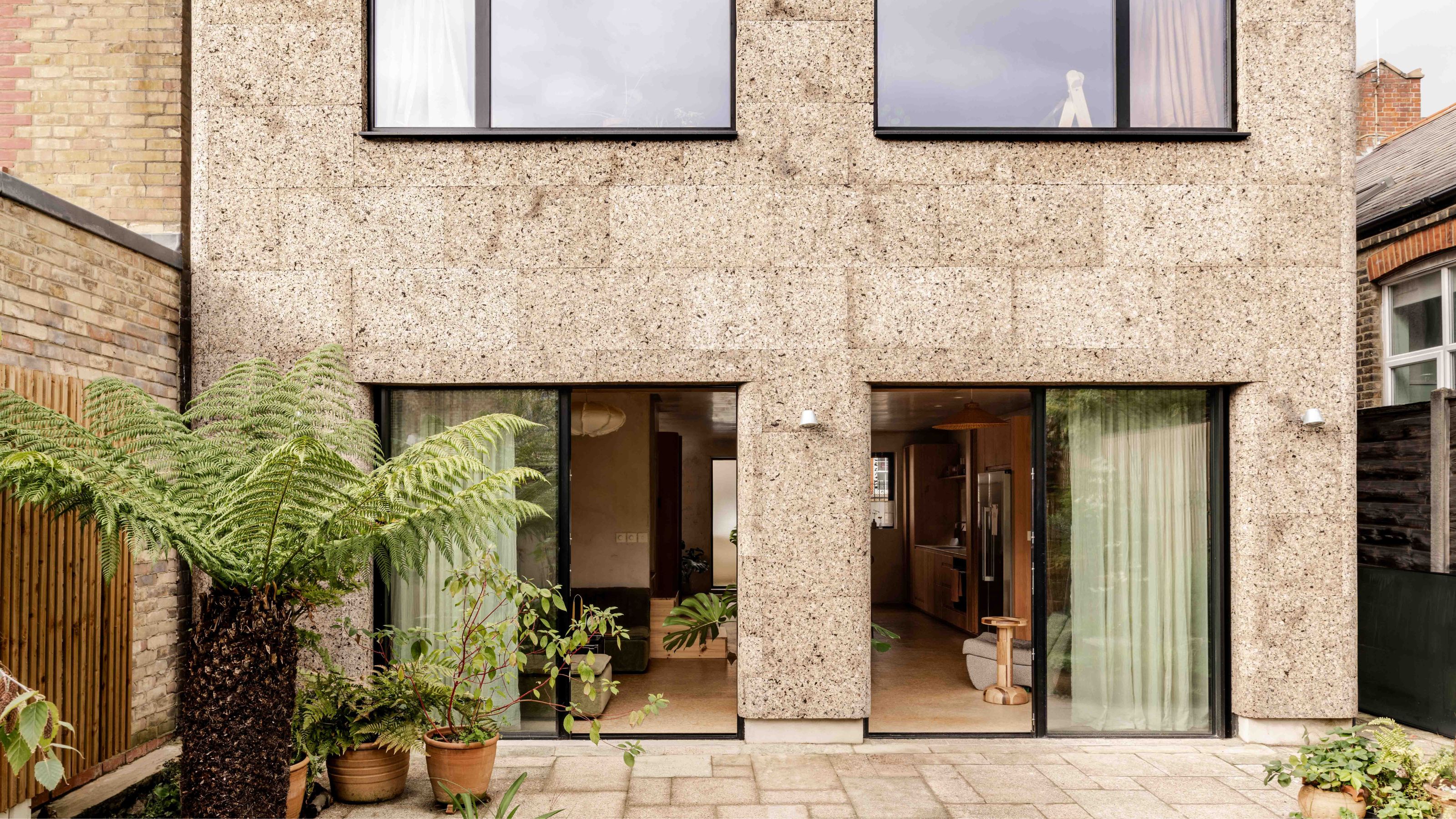 Clad in Cork, This 70s Retrofit is a Model for Low-Impact Living
Clad in Cork, This 70s Retrofit is a Model for Low-Impact LivingIn South Tottenham, interior designer Nina Woodcroft transformed her leaky, inefficient house into a low-energy, tactile family home
By Lauren Jones
-
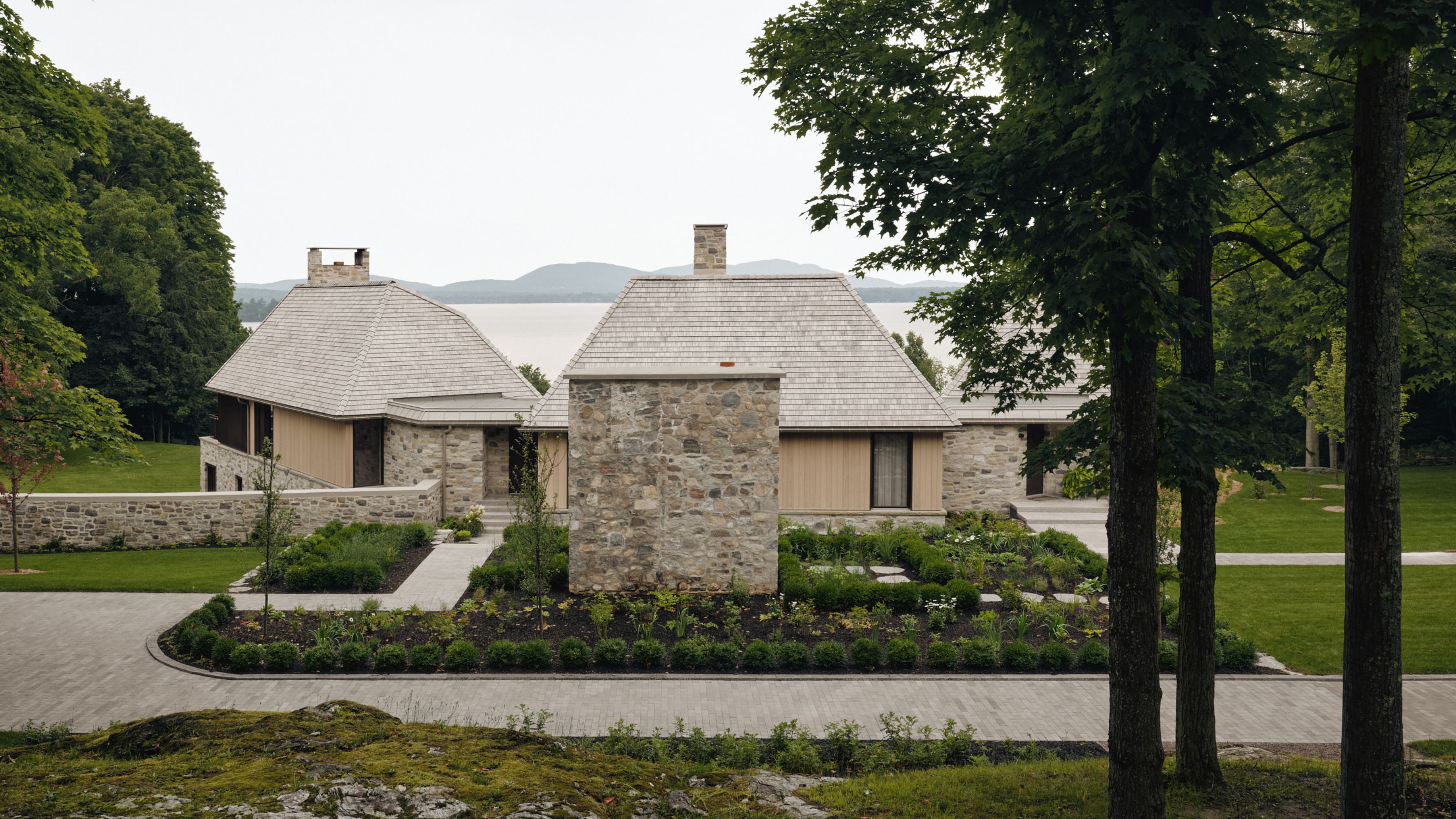 10 Sustainable Homes That Prove Interior Design Can Be Just as Easy on the Eye as It Is on the Earth
10 Sustainable Homes That Prove Interior Design Can Be Just as Easy on the Eye as It Is on the EarthFrom salvaged wood to circular design thinking, these interiors show that sustainability isn’t a compromise, but a creative opportunity
By Lauren Jones
-
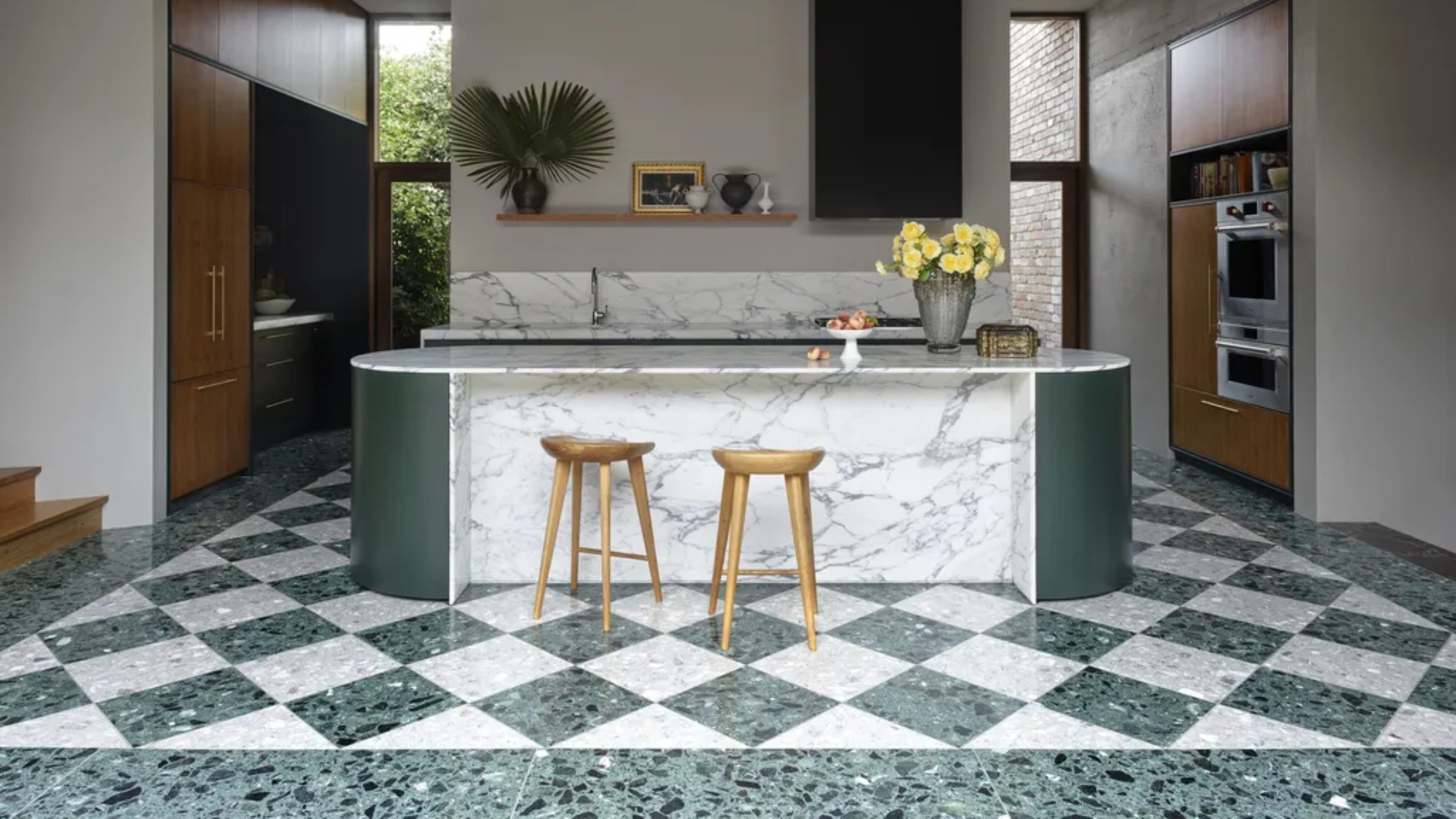 Smeg Says Teal, and We’re Listening — The Kitchen Shade of the Year Is Here
Smeg Says Teal, and We’re Listening — The Kitchen Shade of the Year Is HereDesigners are already using the soft, sea-glass green everywhere from cabinetry to countertops
By Julia Demer
-
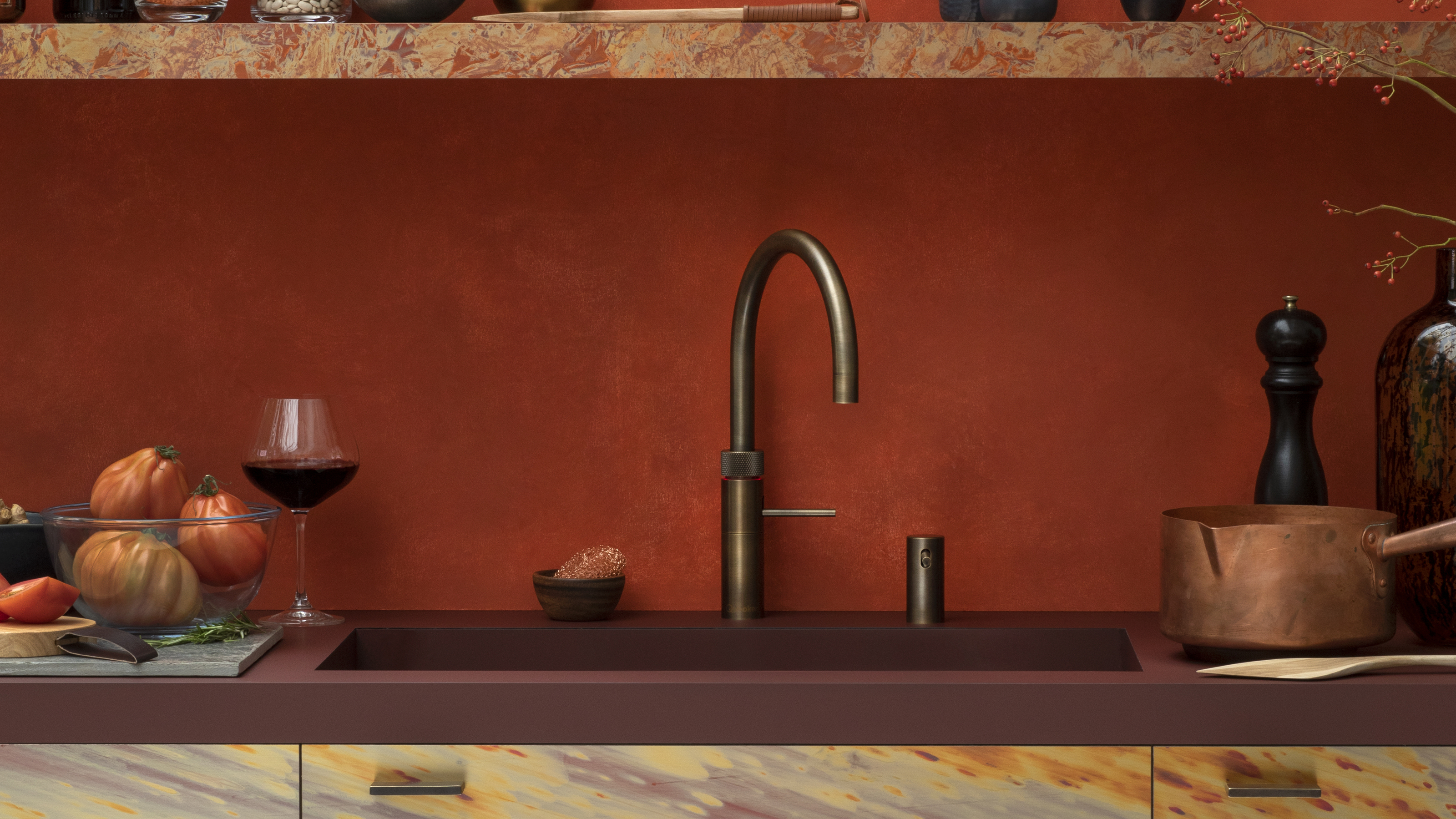 5 Problems With Boiling Water Taps That No One Ever Talks About — And How to Troubleshoot Them
5 Problems With Boiling Water Taps That No One Ever Talks About — And How to Troubleshoot ThemWe got our experts to spill the beans on the truth behind these kitchen staples
By Maya Glantz
-
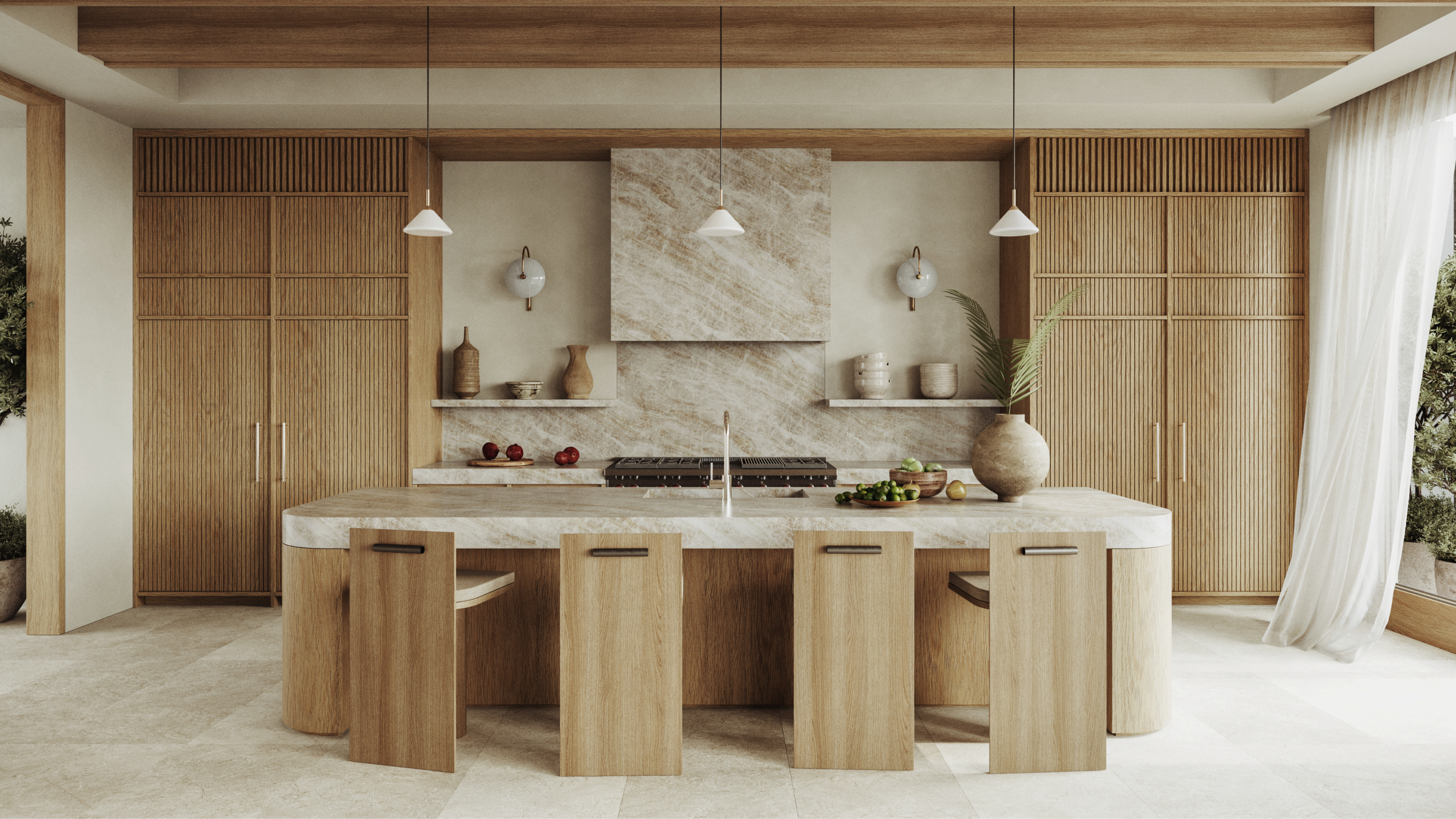 Does a Kitchen Need to Have a Door? The Pros and Cons (and Regulations) Explained
Does a Kitchen Need to Have a Door? The Pros and Cons (and Regulations) ExplainedAs popular as open-plan kitchens may be, they aren't for everyone. Our experts break down all the pros and cons of this design style.
By Maya Glantz
-
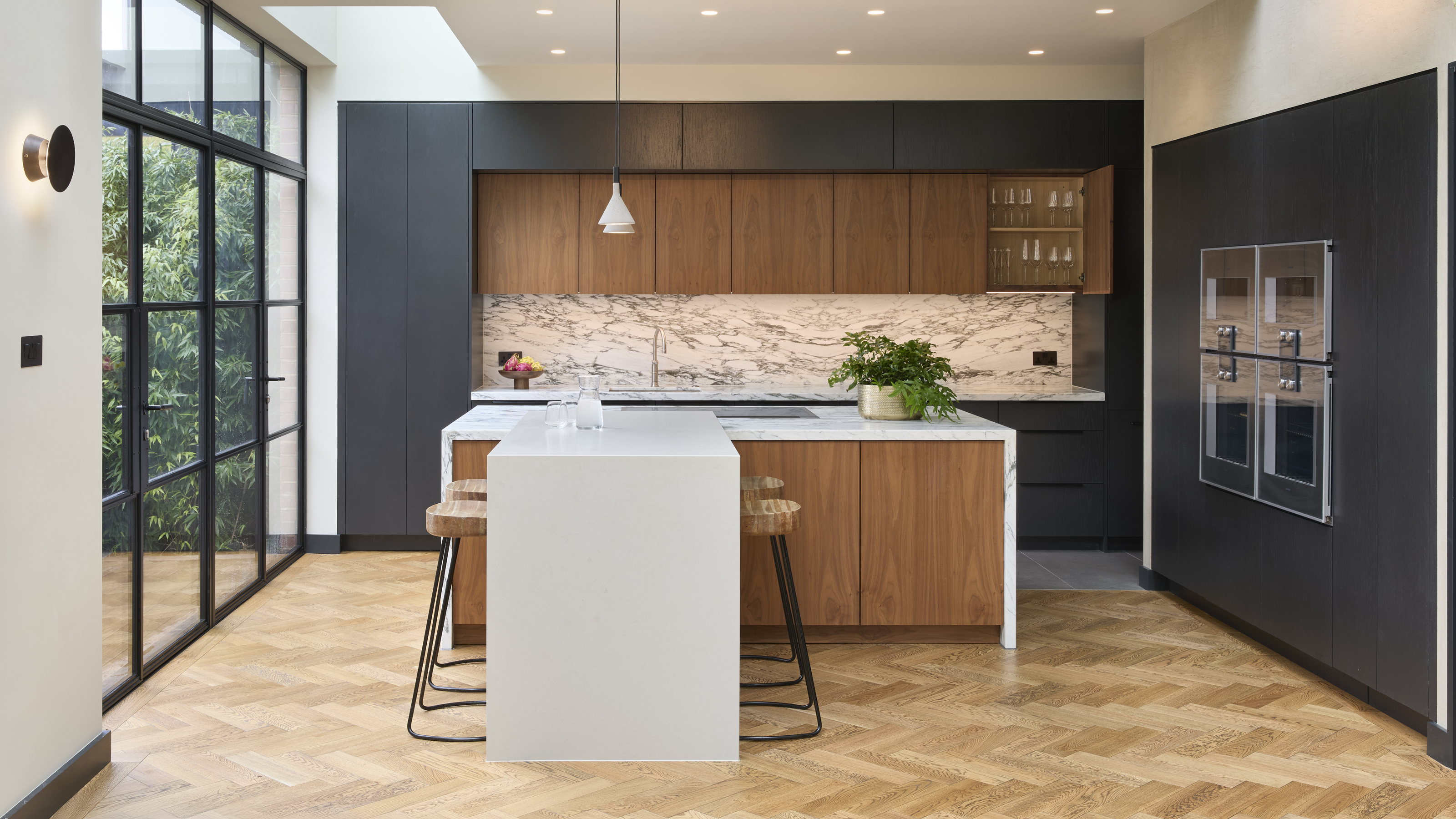 5 Kitchen Layouts That Are Dated in 2025 — Plus the Contemporary Blueprints Designers Are Choosing Instead
5 Kitchen Layouts That Are Dated in 2025 — Plus the Contemporary Blueprints Designers Are Choosing InsteadIf you want to design a kitchen with a coherent floorplan conducive to better flow and functionality, these are the layouts to steer clear of
By Lilith Hudson
-
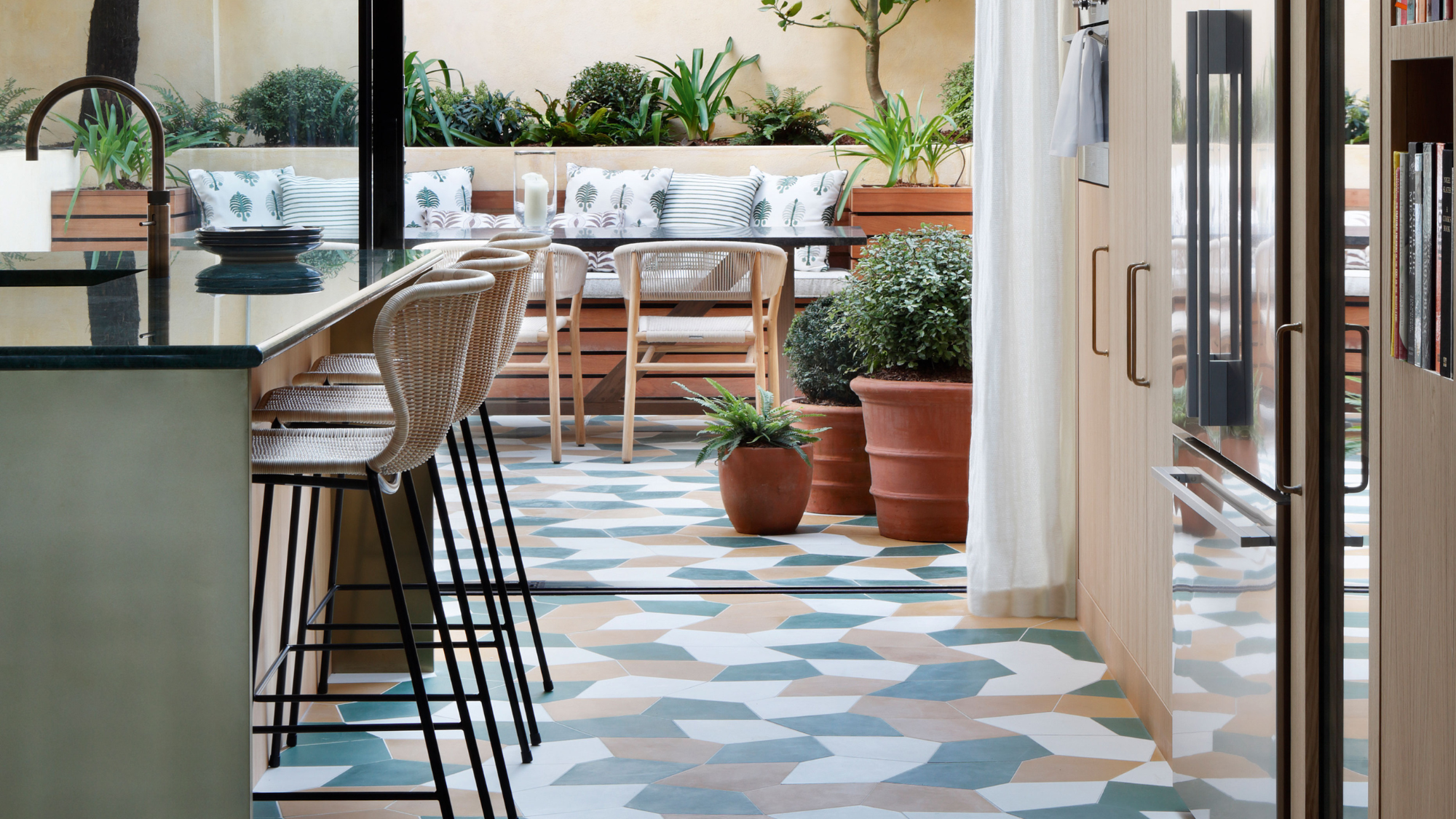 11 Kitchen Flooring Ideas to Build a Brilliant Renovation Scheme From the Ground Up
11 Kitchen Flooring Ideas to Build a Brilliant Renovation Scheme From the Ground UpStarting with your kitchen's flooring isn't a bad idea when it comes to creating a successful scheme — here are 11 modern ways to do it, and expert advice from interior designers
By Tessa Pearson
-
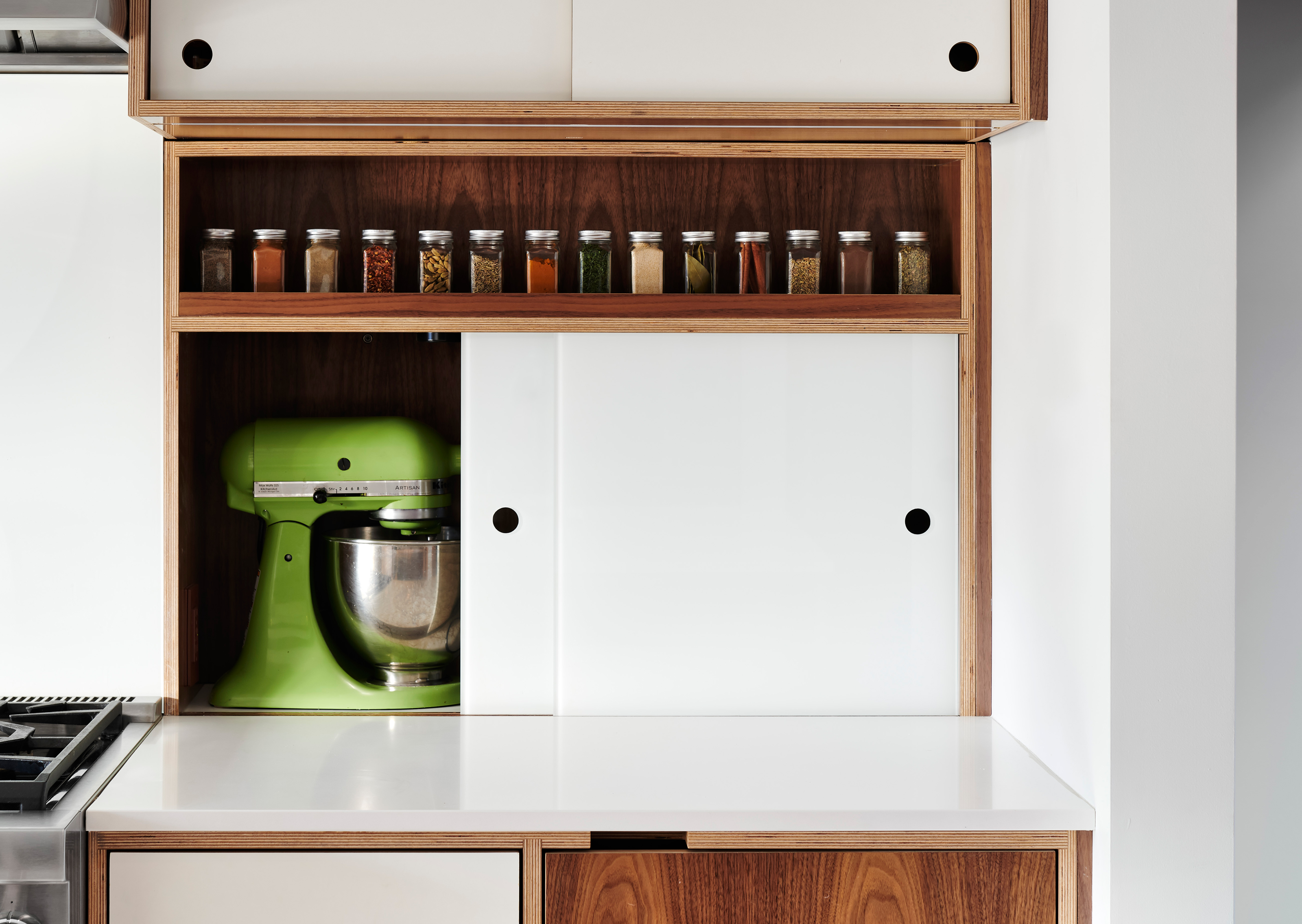 "I Just Bought a Stand Mixer — Where Can I Store It in My Small Kitchen?" 6 Clever Storage Ideas to Consider
"I Just Bought a Stand Mixer — Where Can I Store It in My Small Kitchen?" 6 Clever Storage Ideas to ConsiderLove your stand mixer, but hate not knowing how to store it? We've got the same problem, but these six expert tips have solved our limited storage problems for good.
By Amiya Baratan
-
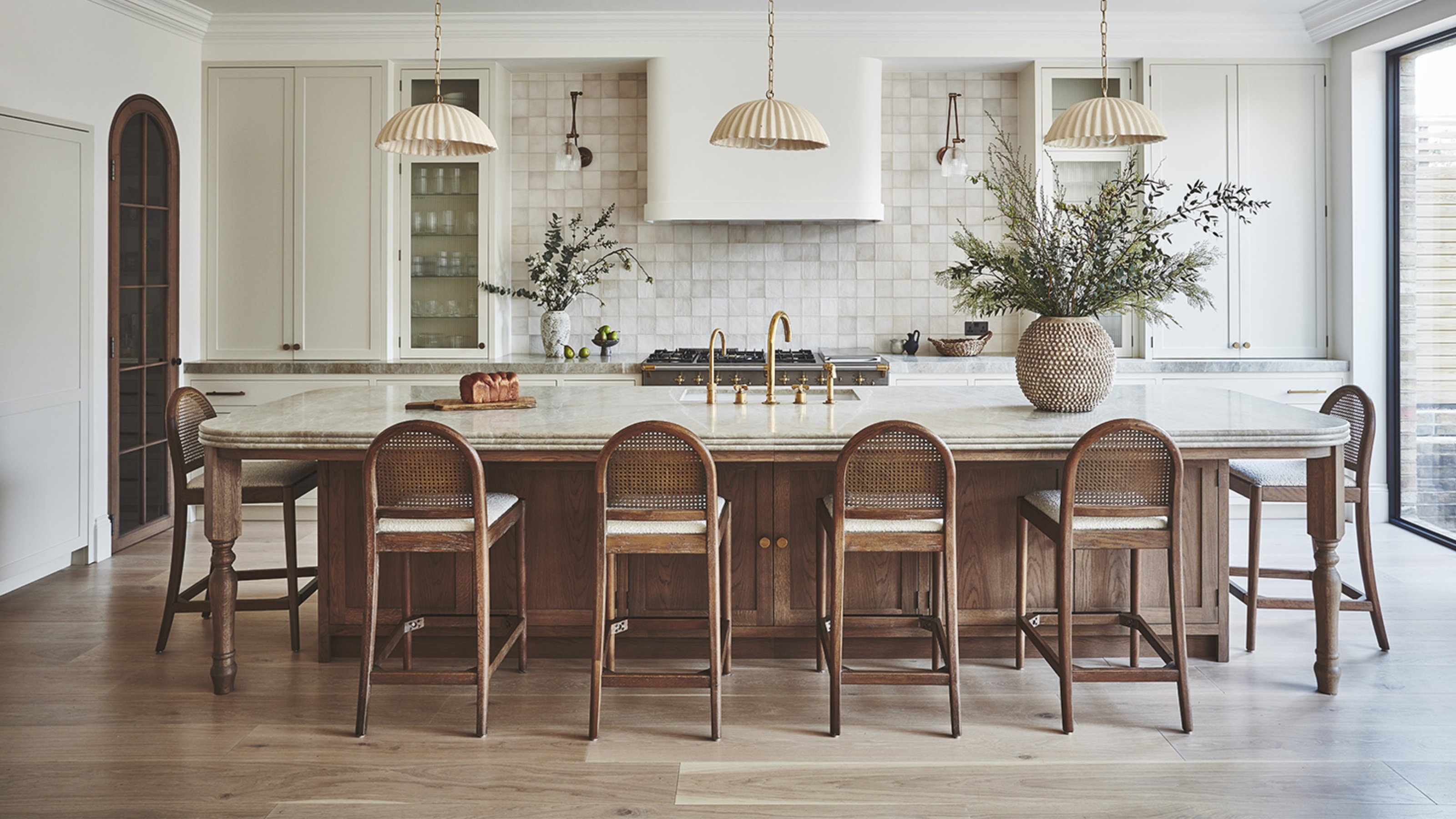 Bar Stools vs Counter Stools — The Difference You Need to Know to Avoid Buying the Wrong One for Your Kitchen
Bar Stools vs Counter Stools — The Difference You Need to Know to Avoid Buying the Wrong One for Your KitchenYou might think they're the same thing, but bar stools and counter stools are subtly different, and knowing how will help you avoid buying the wrong ones
By Maya Glantz
-
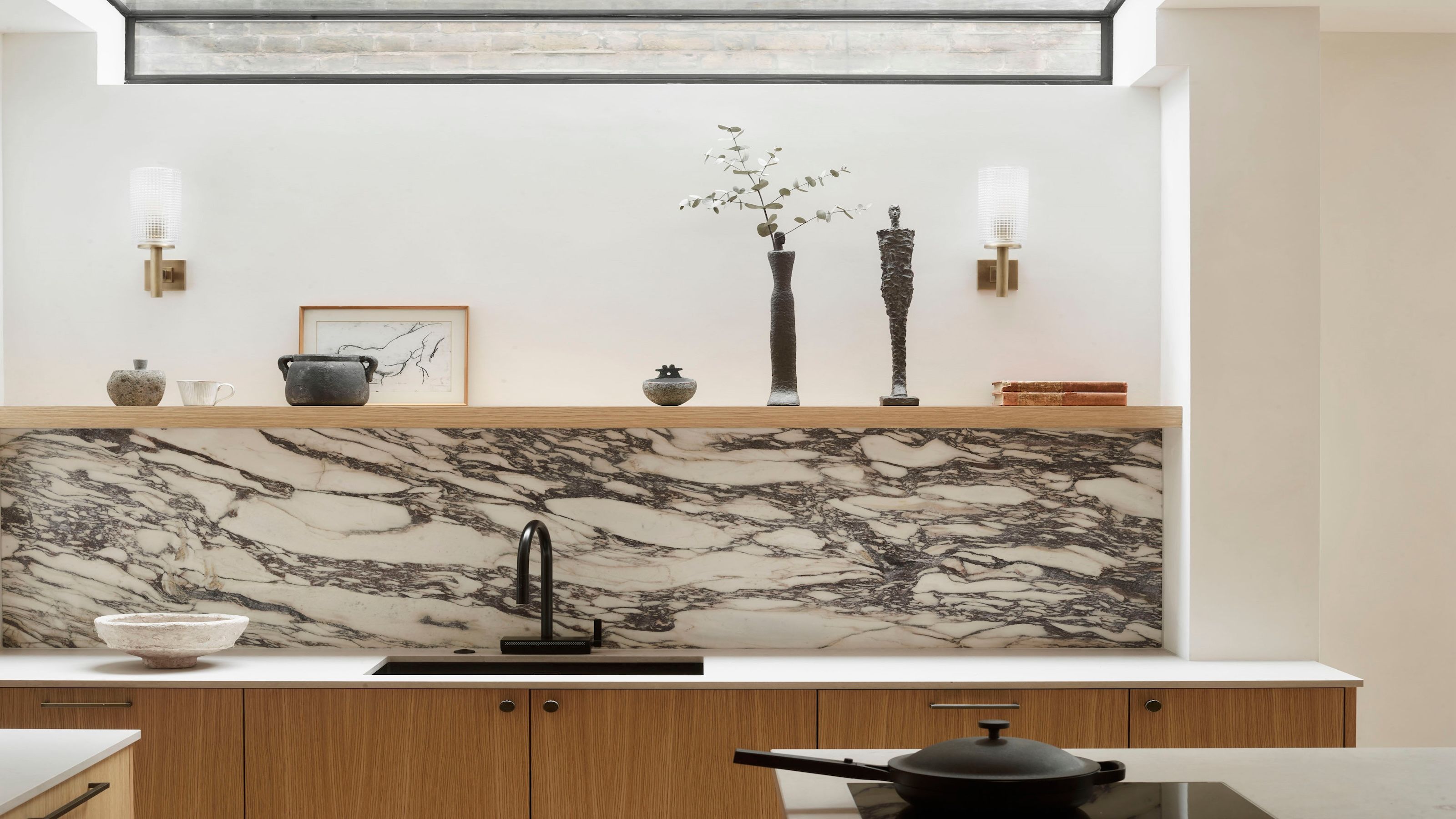 10 Kitchen Tap Ideas That Will Upgrade Your Sink — Who'd Have Thought Doing the Dishes Could Look This Good?
10 Kitchen Tap Ideas That Will Upgrade Your Sink — Who'd Have Thought Doing the Dishes Could Look This Good?From pot fillers to pull-out hoses, these are the kitchen taps that the experts are lusting over right now…
By Lara Sargent
